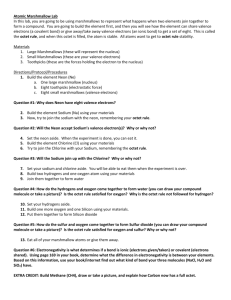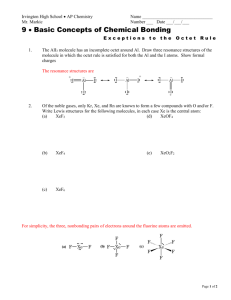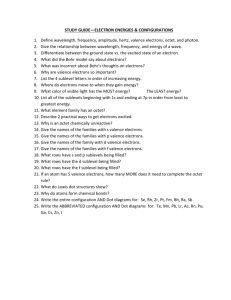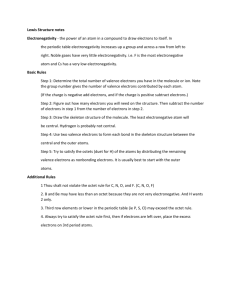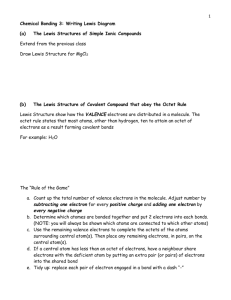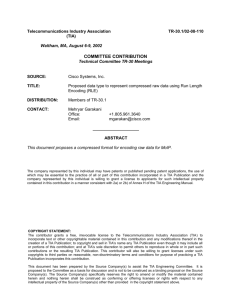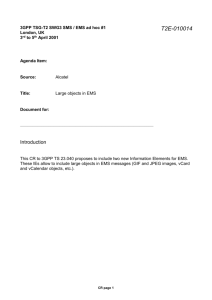Exceptions to the Octet Rule
advertisement
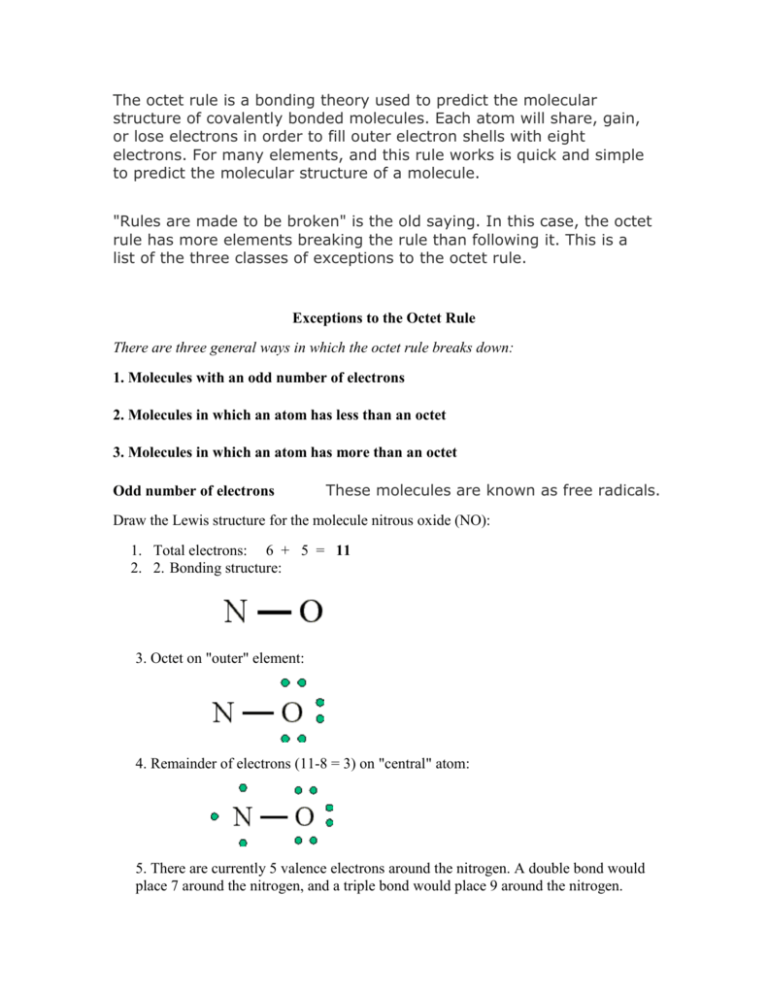
The octet rule is a bonding theory used to predict the molecular structure of covalently bonded molecules. Each atom will share, gain, or lose electrons in order to fill outer electron shells with eight electrons. For many elements, and this rule works is quick and simple to predict the molecular structure of a molecule. "Rules are made to be broken" is the old saying. In this case, the octet rule has more elements breaking the rule than following it. This is a list of the three classes of exceptions to the octet rule. Exceptions to the Octet Rule There are three general ways in which the octet rule breaks down: 1. Molecules with an odd number of electrons 2. Molecules in which an atom has less than an octet 3. Molecules in which an atom has more than an octet Odd number of electrons These molecules are known as free radicals. Draw the Lewis structure for the molecule nitrous oxide (NO): 1. Total electrons: 6 + 5 = 11 2. 2. Bonding structure: 3. Octet on "outer" element: 4. Remainder of electrons (11-8 = 3) on "central" atom: 5. There are currently 5 valence electrons around the nitrogen. A double bond would place 7 around the nitrogen, and a triple bond would place 9 around the nitrogen. Less than an octet (most often encountered with elements of Boron and Beryllium) Draw the Lewis structure for boron trifluoride (BF3): 1. Add electrons (3*7) + 3 = 24 Add octets to outer atoms: Does central electron have octet? NO. It has 6 electrons The structure of BF3, with single bonds, and 6 valence electrons around the central boron is the most likely structure. More than an octet (most common example of exceptions to the octet rule) PCl5 is a legitimate compound. Expanded valence shells are observed only for elements in period 3 and beyond. The 'octet' rule is based upon available s and p orbitals for valence electrons (2 electrons in the s orbitals, and 6 in the p orbitals) Beginning with the n=3 principle quantum number, the d orbitals become available. Third period elements occasionally exceed the octet rule by using their empty d orbitals to accommodate additional electrons Size is also an important consideration: The larger the central atom, the larger the number of electrons which can surround it Expanded valence shells occur most often when the central atom is bonded to small electronegative atoms, such as F, Cl and O. http://www.youtube.com/watch?v=lEqKu_xCJBo http://www.youtube.com/watch?v=lFjKFoZHvAM&feature=fvwrel http://www.youtube.com/watch?v=L5U4qZpZF8w&feature=relmfu
